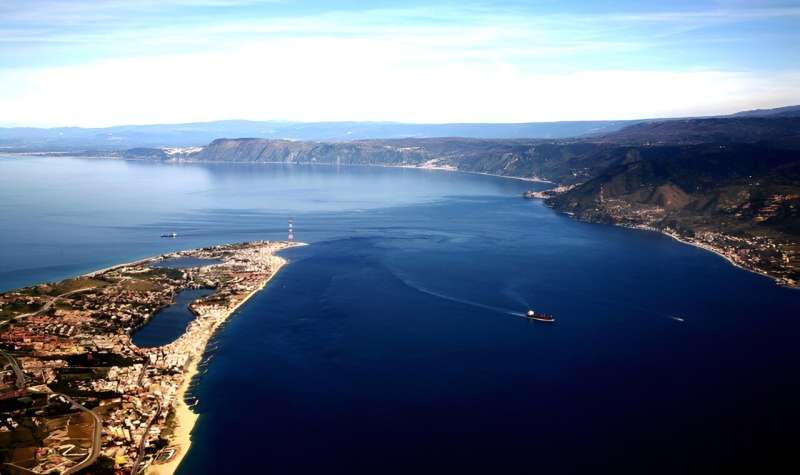This article has been reviewed according to Science X's editorial process and policies. Editors have highlighted the following attributes while ensuring the content's credibility:
fact-checked
trusted source
proofread
Linked faults explain ancient mythology and inform plans for world's longest suspension bridge

Ancient Greek mythology told tales of two fearsome monsters working in tandem across the narrow channel separating mainland Italy from the island of Sicily. Scylla was a vengeful rock-dwelling monster on one side; Charybdis was a tempestuous whirlpool on the other.
These were poetic representations of real perils that ancient sailors faced in Strait of Messina. Now, new research from the University of Oregon unpacks the geology behind the lore, showing how seismically active faults on either side of the strait interact to create a narrow marine passage filled with geologic hazards.
The research, led by UO geologist Rebecca Dorsey and co-authored by Italian colleagues Sergio Longhitano and Domenico Chiarella, was published August 25 in the journal Basin Research.
The push-and-pull between these faults affects modern travelers, too. The Italian government recently approved a longstanding, controversial effort to build a bridge across the strait. The new study reveals the dynamics of seismically active faults that surround the ambitious project, which would be the longest suspension bridge in the world.
The Strait of Messina runs between mainland Italy and the island of Sicily, which sits just off the toe of the boot-shaped mainland of Italy. There are many active faults in the area. Most of them have been well-mapped individually, but they hadn't been looked at holistically.
"Previous researchers have noted that there are two sets of faults that dip towards each other, but the implications for fault mechanics, transfer of strain, and regional tectonic processes hadn't been put together," Dorsey said.
Dorsey and her colleagues integrated existing maps of faults around the area, overlaying them digitally. By looking at the positions, morphology and cross-sectional views of individual faults, the team could piece together a story about how the strait probably formed over time.
On both sides of this narrow strait, mountains are moving up while the seabed is sinking down between the faults, forming a dynamic shallow channel. And in the middle, at the narrowest point of the channel, there's a pivot point.
In this area, "the displacement strain is transferred, or 'handed off,' from one set of faults to another," Dorsey said, like switching a train from one track to another in a train yard.
Understanding the interactions between faults on opposite sides of the strait is important for considering what might happen to a bridge in the event of an earthquake.
The Strait of Messina bridge project has been in the works in some capacity for decades and has hit a variety of snags, from political and environmental opposition to funding issues. The project was recently revived after a hiatus. But the engineering plans and risk assessments are still ongoing.
"Active fault interactions and strain transfer need to be included in seismic risk analysis," Dorsey said. "This is a shifting, dynamic landscape, and the stakes are high."
More information: Rebecca J. Dorsey et al, Structure and morphology of an active conjugate relay zone, Messina Strait, southern Italy, Basin Research (2023). DOI: 10.1111/bre.12818
Provided by University of Oregon




















